Climbing Pico de Orizaba: An Intro To Mountaineering
Pico de Orizaba is both the highest peak in Mexico and the tallest volcano in North America. Andrea Burtzel takes us through the intrepid adventure she had there with Devin, her partner.
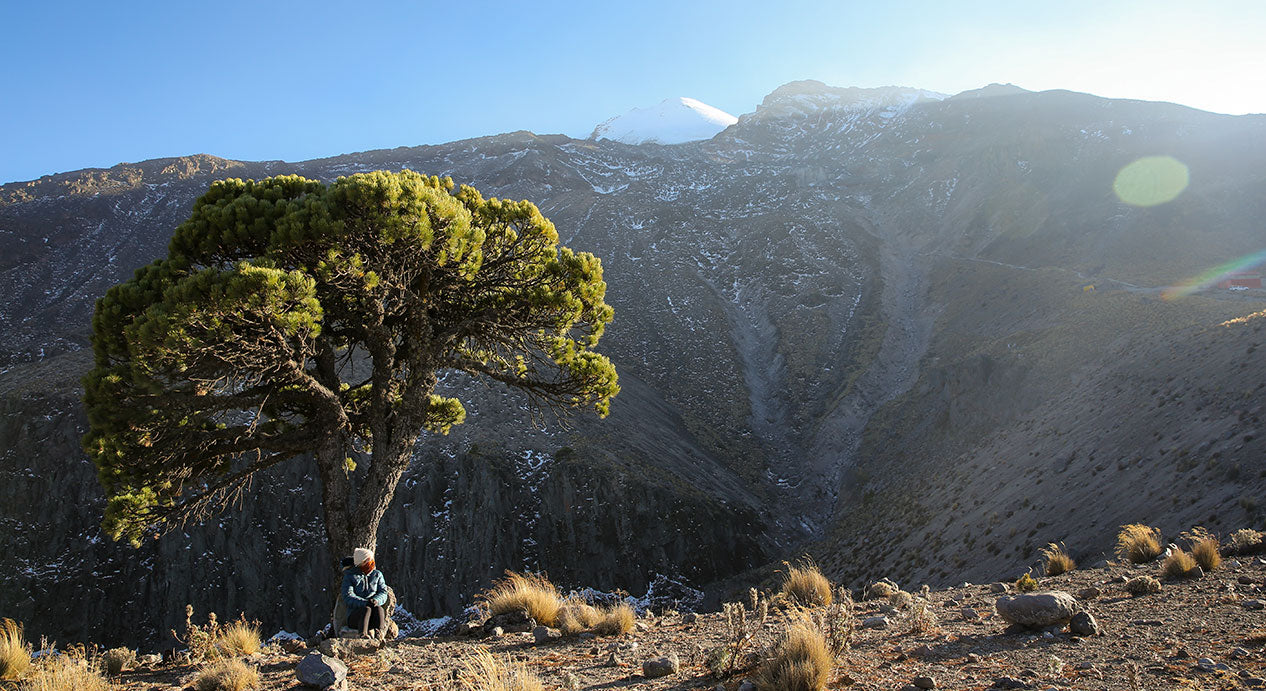
On January 18th, 2022, my partner and I stood at the summit of this 18,620 ft (5,675 m) peak; basking in the glory, half dead from the altitude. It occurred to me then, is this what mountaineering is? One big sufferfest?
The days leading up to the climb were spent at high altitude, preparing our sea level bodies for the 18k elevation that lay ahead.Traveling from Alaska, Devin and I are no strangers to strenuous hikes, sketchy scree fields, or glacier travel. We were confident in our navigation skills, the idea of a guide unnecessary.
It occurred to me then, is this what mountaineering is? One big sufferfest?
When we arrived at base camp, we felt a sense of accomplishment to have made it this far. It’s been long travel days, hauling heavy packs, and logistics up until this point. Of course, we had our fun too. La Malinche stood out like a crown jewel in the acclimatization process. A brilliant day hike through a forest to the summit of a volcano at 14,640 ft (4,462 m), with aerial views of smoke billowing from Popocatepetl (another 17,000 ft volcano nearby).
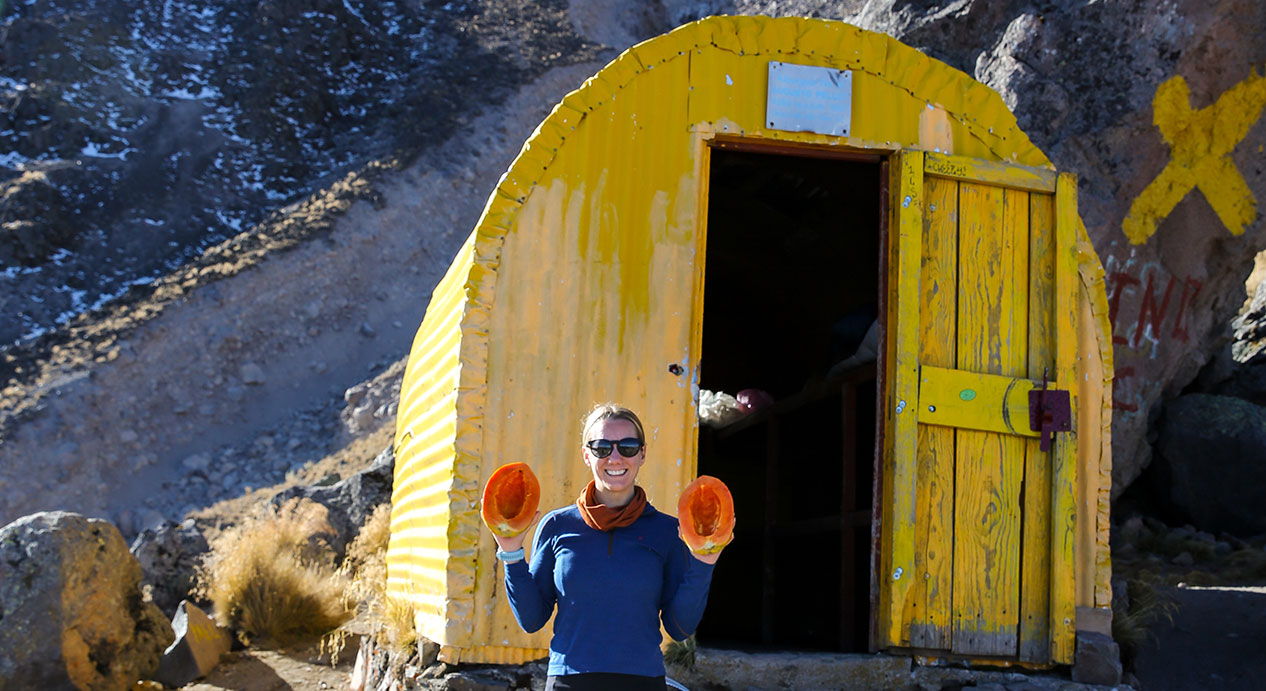
Andrea wears the Yardang Jersey and Yardang Gaiter
While there were various accommodations at the base camp on Pico de Orizaba, we chose the smallest hut and dubbed it, “the magic yellow hut.” A nice spot to attempt to sleep at 14,010 ft (4,270 m). Feeling pretty ok at our new heights, we had a nice walkabout, exploring the lands.
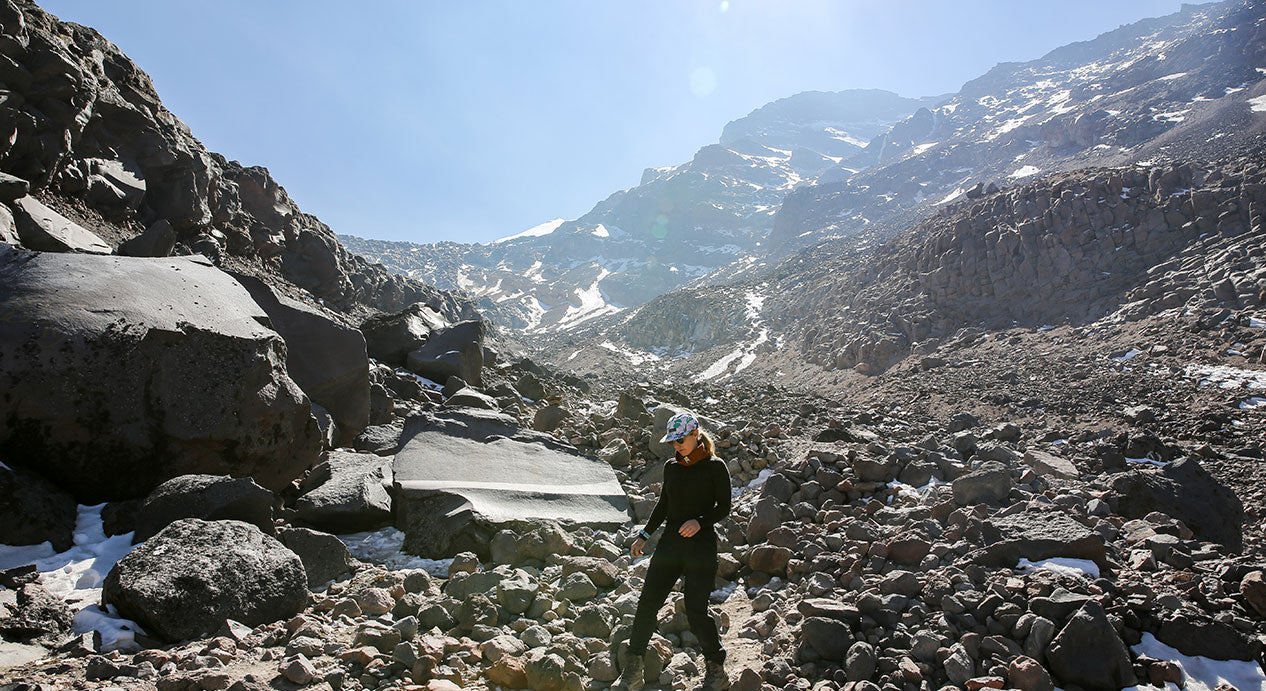
The next day was spent hiking a little further, and higher, to about 16k ft. There, we found a nap spot next to a boulder (after all, this was technically a rest day). We made it back in time to have our last meal before the alpine start, and nestled into our sleeping bags shortly thereafter.
Our midnight alarms chime in unison. The air feels warmer than the night before, and the wind is calm. Devin and I eat as much breakfast as we can, unsure when the next time we will be able to eat a solid meal again. We grab our packs, bid farewell to our yellow hut, and we’re off.
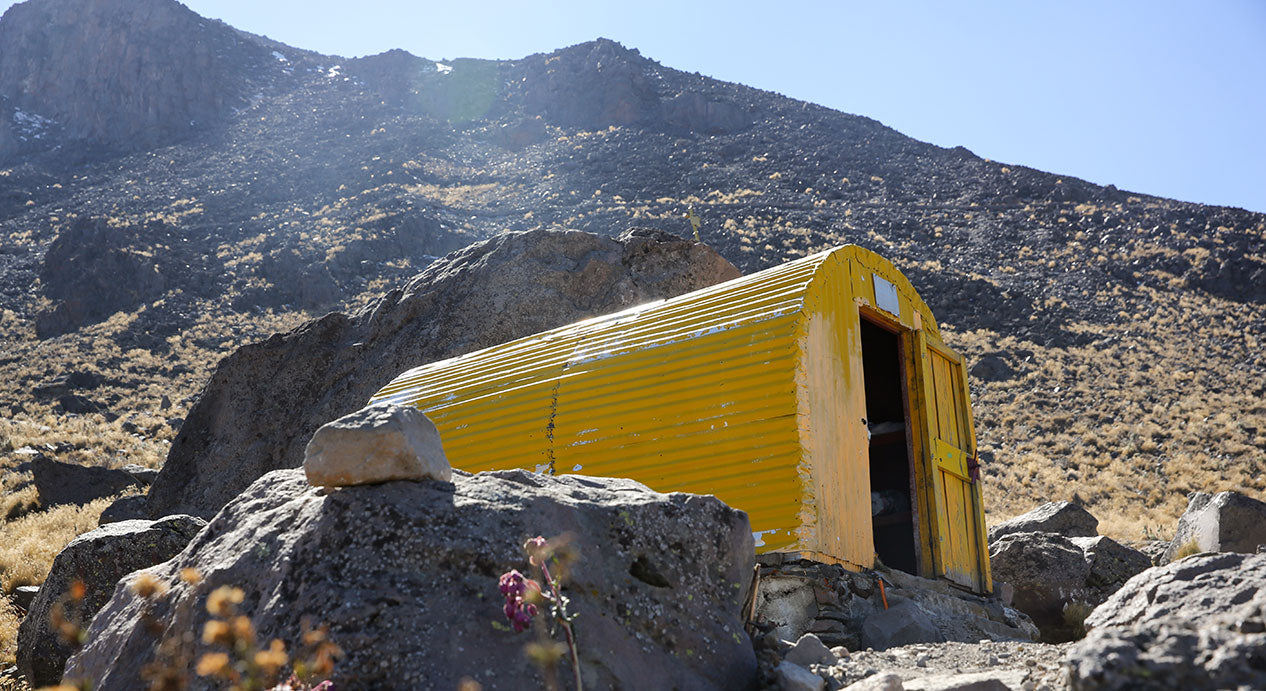
We hike into the dead of night, with several other parties we see only by the lights of their headlamps. Soon we find ourselves alone on the mountain, I feel bliss in the escape of it. We follow the path up the mountain until there is none. They call this next section “The Labyrinth” - a maze of boulders, pinnacles and spires, cliffs and dead ends. It’s where most hikers have trouble navigating, and difficulty with the rocks and loose scree. To us though, it was pretty familiar terrain. We scurry our way up the rocks in the dark, taking breaks every 1,000 ft of elevation gain. The rest breaks seemed unnecessary at first, but that changed the higher we climbed.
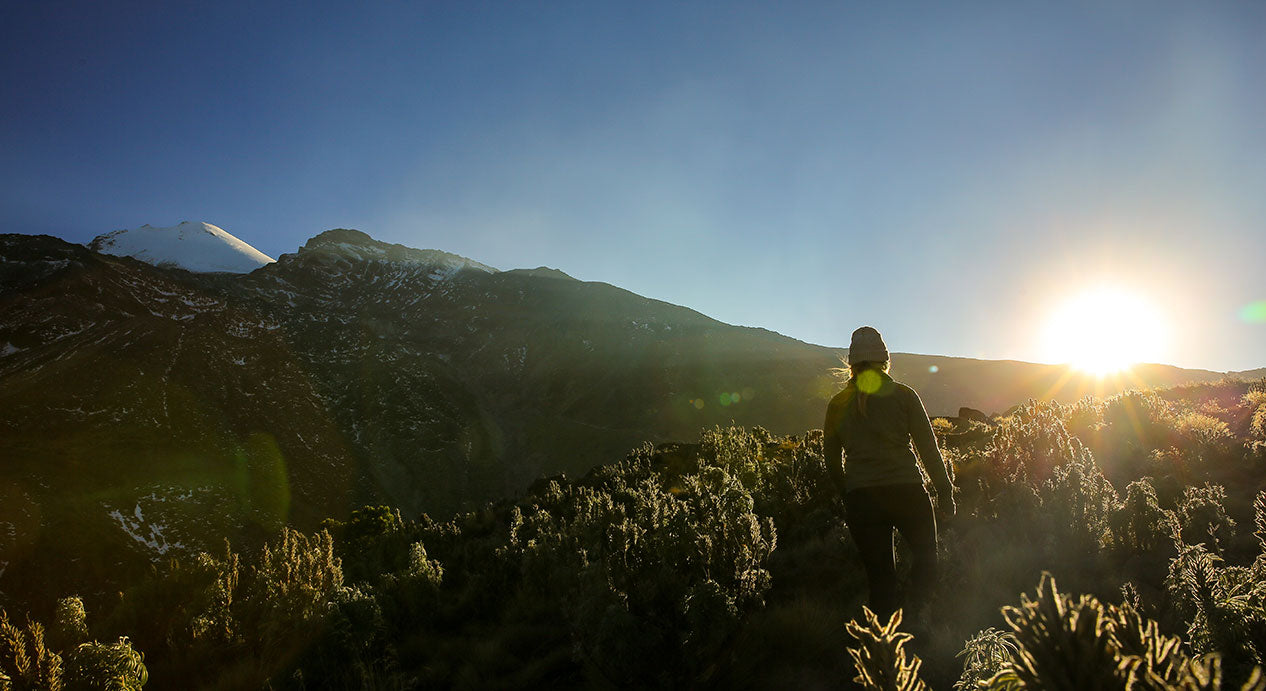
We knew we had made it to the most upper part of the mountain when we reached the base of the Jamapa Glacier at nearly 17,000 ft. While not technical, it is steep and long, the ice is hard and a fall would be difficult to stop. Guided groups are required to rope up and wear helmets. The wind had vastly increased, the air grew thin and the cold set in. We took a minute to layer up, secure our crampons, take out ice axes… and so began the Jamapa.
It quickly became apparent our breathing was a struggle, and we needed to implement the 20 step rule — take 20 steps, rest. Repeat. This worked for a while.
AMS (Acute Mountain Sickness) is described as physical distress from difficulty adjusting to lower oxygen pressure at high altitude. We experienced a variety of symptoms, and each to different degrees. I was fighting extreme fatigue, a pounding headache, and dizziness. Devin was battling his own AMS symptoms. But we were determined. And looking out for each other.
Near the top of the glacier, I questioned if I could go on. “A few more steps, then you can rest again...” “I can do hard things.” Self talk was all I had at this point. When it felt hopeless to go on at this altitude, we turned a corner, and realized we were done with the glacier. What lay ahead was a short loose scree section to the top of… something. Each footfall felt very, very heavy.
Concerned for my own safety, I told Devin I’m not sure I can do this. “Let’s just make it to the top of this, and then reassess.” I am, if anything, easily persuaded for adventure. “Ok” I said. To our surprise, we took 20 more steps to find the summit of Pico de Orizaba.
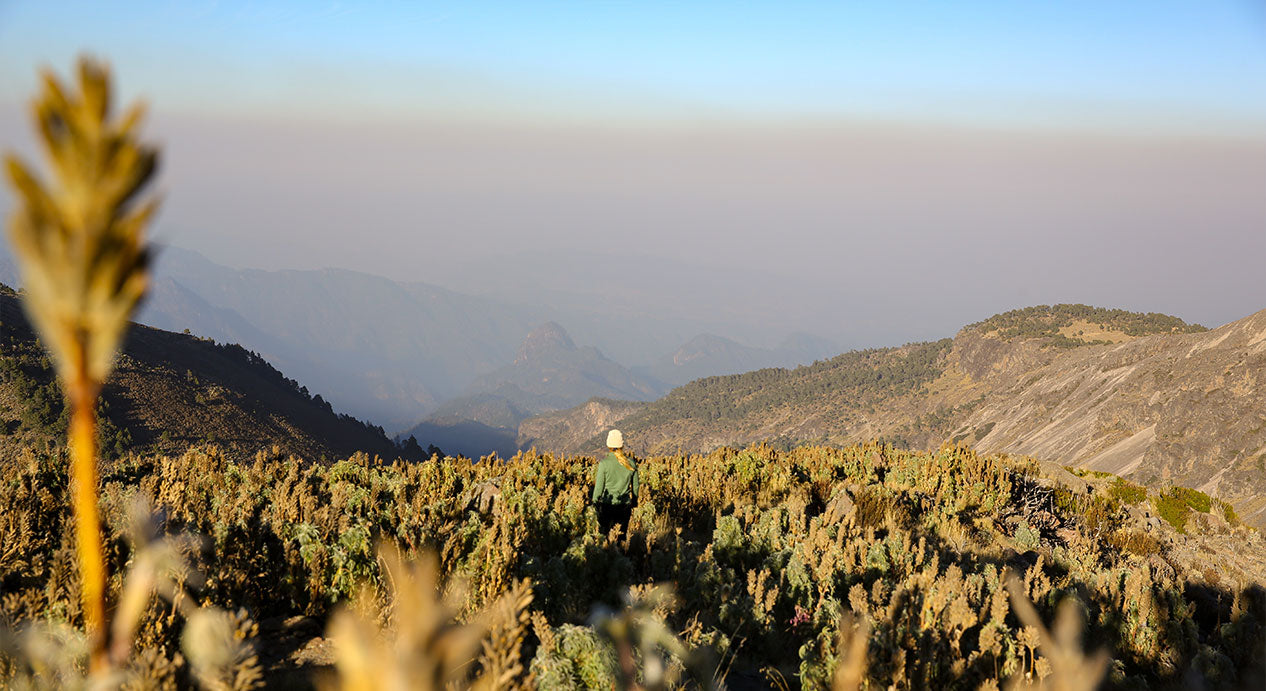
Andrea wears the Xenolith Sweater 1.0 and Neema Hat
I didn’t quite comprehend we were at the summit, maybe it was shock? Maybe it was AMS? But when it finally hit me, I let out a deep shaky breath, and sank. The crater extended far beyond what I could see, I feared the closeness of the edge and never being seen again. It was magnificent.
Upon our return from Pico de Orizaba, I shared my story with a friend. She asked, “Why do you do this, when it’s so hard?” Having asked myself this same question, I had an answer. “I think it's a very personal experience. It represents self-discovery and achievement, and I get to explore a new part of the world. And truthfully, I love the challenge.
Our Yardang wool mid layers and Yushu yak and merino wool base layers are perfect for multi-day adventures. kora fabrics help to keep your body temperature regulated and their natural breathability and wicking properties mean they can be worn without washing for several days at a time.